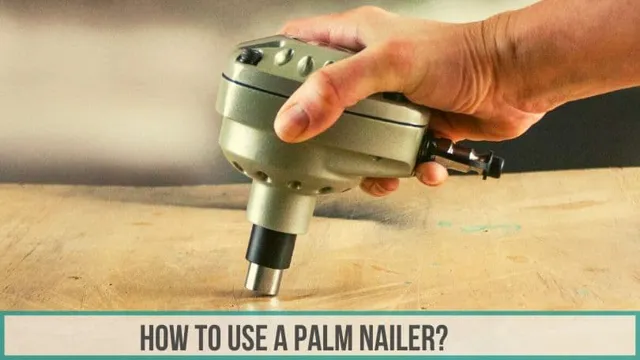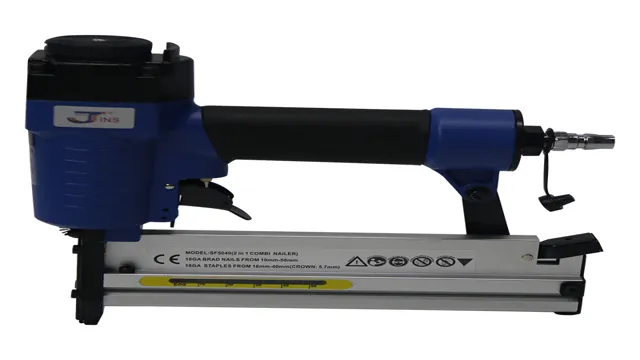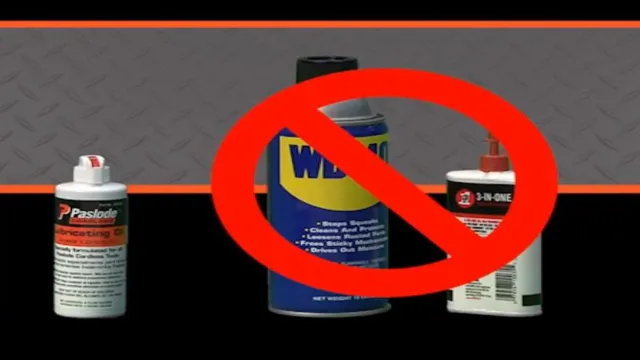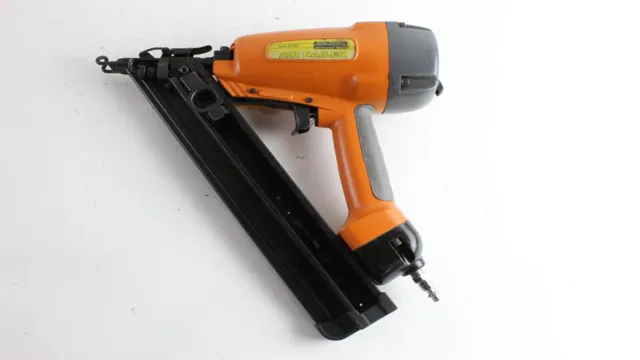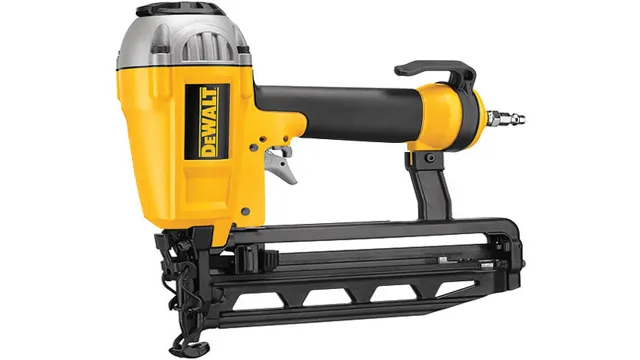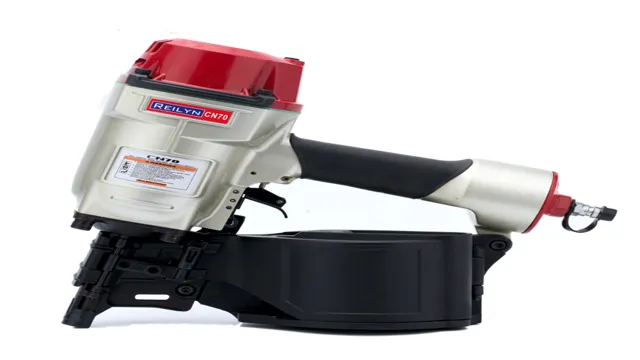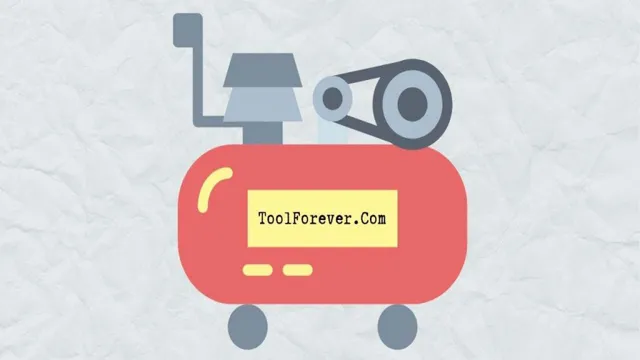How to Use an Air Chisel: Tips and Tricks for Effective Metalworking

If you’re serious about your DIY projects, then you simply can’t go without an air chisel. Using an air chisel might appear to be a simple task, but it requires some knowledge and concentration to execute it correctly. Luckily, we’re here to help you with all the tips and tricks you need to know to start using an air chisel confidently.
Air chisels are an excellent tool for all kinds of heavy-duty work, from remodeling to auto repair, but if you’ve never used one before, it can be confusing. You have to choose the right chisel bit and adjust the air pressure to ensure you’re doing a precise and efficient job. Air chisels are loud and vibratory, and you should take care not to damage the surface or your hands while handling them.
An air chisel is like a miniature jackhammer, and it can be a bit overwhelming if you’ve never used one. However, with a bit of patience and practice, you can master the art of air chiseling. Think of it as playing a musical instrument – it requires time, focus, and good technique.
In this blog, we’ll go over how to use an air chisel the correct way. We’ll provide step-by-step instructions on how to set it up, adjust the pressure, and choose the right chisel bits. We’ll also give you some tips and tricks on how to stay safe while using an air chisel and how to maintain it.
So, are you ready to add air chiseling to your list of DIY skills? Let’s get started!
Overview of Air Chisels
Using an air chisel can be a handy tool for all sorts of projects, from removing stubborn bolts to carving intricate designs into metal or stone surfaces. To get started, you’ll need an air compressor and a set of chisel bits suitable for your task. The chisel bits come in different shapes and sizes, so it’s essential to select the right one for the job.
Once you have the appropriate chisel bit, insert it into the air chisel and secure it firmly. Then connect the air hose to the air chisel and adjust the air pressure to the recommended setting for your desired chiseling job. With your safety gear on, hold the chisel with both hands and press the trigger to begin chiseling.
It’s important to maintain a firm grip and keep the chisel at the correct angle for the best results. Remember to take breaks regularly and check the chisel bit’s condition to avoid any damage or wearing out. By following these simple steps, anyone can learn how to use an air chisel like a pro.
What is an Air Chisel?
An air chisel, also known as an air hammer or pneumatic chisel, is a versatile power tool that is commonly used for shaping, cutting, and removing metal, wood, concrete, and other materials. It works by converting compressed air into mechanical energy that drives a piston back and forth inside the tool’s cylinder. As the piston moves, it causes a chisel or other attachment to strike the workpiece with a rapid succession of blows, allowing the user to chip away at the material with ease.
Air chisels are popular among professionals and DIY enthusiasts alike due to their high power-to-weight ratio, ease of use, and ability to work in tight spaces. They come in a variety of shapes and sizes, making them suitable for a wide range of applications, such as automotive repair, construction, metalworking, woodworking, and more. Whether you’re a hobbyist or a professional, an air chisel can be a valuable addition to your tool collection.

Types of Air Chisels
Air chisels are highly effective tools for cutting, shaping, and removing materials. They are powered by compressed air and can be used for a variety of functions. There are several types of air chisels, including pneumatic hammers, impact wrenches, and rotary hammers.
Each type is designed for specific applications and tasks. Pneumatic hammers are powerful tools that deliver forceful blows, making them ideal for heavy-duty work such as breaking concrete. Impact wrenches are more versatile, capable of both tightening and loosening nuts and bolts.
Rotary hammers feature a rotating mechanism that provides additional cutting power, making them well-suited for drilling and cutting through hard materials like stone. No matter what type of work you need to do, there’s an air chisel that’s perfect for the job. Just make sure to choose the right type based on your specific needs and requirements.
Basic Safety Precautions
Air chisels are a powerful tool that can be used for a variety of applications, including cutting, chipping, scraping, and carving. However, it is important to take basic safety precautions when using an air chisel to prevent injury. Before starting work, make sure to wear appropriate safety gear such as eye protection, gloves, and earplugs.
Ensure that the air compressor is set to the correct pressure and that the chisel is securely attached to the tool holder. When using the chisel, keep both hands on the tool and avoid using excessive force, as this can cause the tool to kick back and injure you or damage the workpiece. Additionally, avoid placing your body in the path of the chisel or working near other people.
By taking these simple steps, you can stay safe while using an air chisel and get the job done efficiently and effectively. Remember, safety should always come first when working with power tools!
Using an Air Chisel
If you want to remove stubborn bolts, nuts, or rivets, an air chisel can be a lifesaver. However, before you can use it, you need to know how to wield it correctly. First, make sure you have the proper safety gear, including gloves and eye protection.
Then, attach the chisel tip to the air hammer, making sure it’s secured tightly. Next, adjust the air pressure to a level that’s appropriate for the material you’re working with. When you’re ready to start chiseling, hold the tool with both hands, keeping your body stable and your feet shoulder-width apart.
Aim the tip at the target, and press the trigger. The chisel will vibrate and quickly chip away at the surface. Keep your movements slow and steady, and don’t apply too much force.
Remember, an air chisel is a powerful tool that can easily damage your project if used incorrectly. With practice, though, you’ll become a pro at removing even the most stubborn materials from your equipment.
Step 1: Choose the Right Tip
When it comes to using an air chisel, choosing the right tip is crucial. The tip of an air chisel determines the task it can perform, and different tips are suitable for different jobs. Therefore, before using an air chisel, it is important to assess the task at hand and make an informed decision about what tip to use.
For instance, a flat, wide tip is ideal for removing large areas of rust, while a pointed tip is excellent for detail work, such as cutting or shaping. It’s also essential to consider the hardness of the material being worked on, as this affects the type of tip you should use. Harder materials require a tougher tip, while softer materials need a gentler touch.
The right tip can make all the difference when using an air chisel, so take the time to choose carefully.
Step 2: Attach the Tip
Once you’ve got your air chisel prepped and ready to go, the next step in attaching the tip is to actually attach it. But before you start hammering away with your chisel, take a moment to make sure you’re using the right tip for the job. Depending on the type of material you’re working with, you may need a different tip shape or size.
Once you’ve got the right tip selected, attach it to the end of the chisel with the provided screws or clips. Make sure it’s securely fastened before you start using it, as any wobbling or movement could cause damage or injury. With your tip attached firmly, you’re ready to move on to the next step in your project.
Step 3: Prepare the Work Surface
If you’re using an air chisel to prepare your work surface, there are a few things to keep in mind. First and foremost, make sure you’re wearing proper safety equipment, including eye and ear protection. Next, choose the right air chisel attachment for the job, whether it’s a straight chisel for basic cutting or a pointed chisel for more precise work.
When you’re ready to begin, hold the air chisel firmly and position it carefully, keeping in mind the angle and pressure required to remove the material without damaging the surface underneath. It can take some practice to get the hang of using an air chisel effectively, so don’t be afraid to start slowly and build up speed and confidence gradually. As with any power tool, safety should always be your top priority, and if you’re unsure about how to properly use an air chisel, seek advice from a professional or experienced user.
Step 4: Start Chiseling
When it comes to chiseling, using an air chisel can be a game-changer. An air chisel is a tool that allows you to apply concentrated force to a specific area, making it perfect for chipping away at tough materials like concrete and metal. To begin using an air chisel, first, make sure you have the correct attachment for the job you are doing.
Once you have the right attachment, hold the air chisel with both hands and place the tip of the tool onto the area you want to work on. Slowly pull the trigger to start the tool, and then begin chiseling away at the material. It’s important to start with a lighter touch and then gradually increase the pressure to avoid damaging the material you are working on.
As you work, pay attention to the angle of the air chisel, and adjust it as necessary to achieve the desired result. With a little practice, you’ll be chiseling like a pro in no time!
Maintenance and Care
If you’re looking to use an air chisel, it’s important to know the basic steps for proper handling. Firstly, be sure to wear safety gear such as goggles and ear protection to prevent damage. Secondly, attach the appropriate chisel bit to the air chisel before turning it on.
Once you have your chisel bit set in place, adjust the pressure to the appropriate level based on the material you will be working on. Lastly, maintain proper lubrication of the air chisel to lessen wear and tear on the machine. By taking these simple steps, you can ensure that your air chisel will last longer and perform better.
Remember to also handle the air chisel gently and properly store it when not in use to further extend its lifespan. Using an air chisel may seem daunting at first, but by following these tips, you can handle the tool with ease and confidence.
Step 1: Clean and Lubricate the Chisel
Maintaining and caring for your woodworking tools is an essential part of ensuring that they last for a long time. The first step in caring for your chisels is to clean and lubricate them. After prolonged use, chisels can accumulate dust, debris, and moisture, which can cause them to rust and become dull.
To clean your chisels, use a soft cloth to wipe off any sawdust or debris that may have accumulated on the blade. Then, apply a small amount of lubricating oil to the blade and work it in with a clean cloth. The lubricating oil will help to prevent rust and keep the blade sharp, making it easier to use on your woodworking projects.
Regular cleaning and lubrication will help to preserve your chisels and keep them in top condition. So, keep your chisels clean and lubricated to maintain their quality and extend their lifespan.
Step 2: Check for Damage or Wear
When it comes to maintaining equipment, checking for damage or wear is an essential step in ensuring its longevity. Taking the time to inspect your equipment can save you time and money in the long run. During the inspection process, be sure to check for any signs of cracks, worn-out parts or damage caused by environmental factors.
Keep an eye out for any changes in performance or unusual noises as well. This can indicate potential issues that need to be addressed promptly. By regularly checking and maintaining your equipment, you can extend its lifespan and prevent major issues from occurring down the line.
So, take a few moments to assess your machinery and identify any areas that may require attention. Your equipment will thank you for it!
Conclusion
In conclusion, using an air chisel is all about finesse and control. Think of it as a delicate dance between you and the material you’re working with. With practice and patience, you can accomplish impressive feats of precision and power.
But always remember to keep safety in mind and wear appropriate gear to protect yourself from flying debris and loud noise. So grab your air chisel, put on some tunes, and get ready to rock and chip!”
FAQs
What is an air chisel and how does it work?
An air chisel is a handheld power tool that uses compressed air to create percussive force. It works by converting the compressed air into mechanical motion and delivering it to a tip or bit, which then hits the workpiece to chip away at material.
What are the different types of air chisel tips and what are they used for?
There are several types of air chisel tips, including pointed, flat, and scalloped. Pointed tips are used for precision work and can be used to create small holes or remove tight areas of material. Flat tips are used for removing large sections of material, while scalloped tips are used for smoothing surfaces or removing coatings.
Can an air chisel be used for cutting metal?
Yes, an air chisel can be used for cutting metal with the appropriate tip. However, it is important to use caution and proper safety equipment when cutting metal with an air chisel.
How do you properly maintain an air chisel?
Proper maintenance of an air chisel involves regularly cleaning and oiling the tool to prevent rust and ensure smooth operation. It is also important to inspect the air hose and fittings for wear or damage before each use.
What are some safety precautions to keep in mind when using an air chisel?
When using an air chisel, it is important to wear proper eye and ear protection, as well as gloves to protect your hands. Avoid pointing the tool at anyone and make sure the workpiece is securely clamped or held in place. Always disconnect the air supply before changing tips or performing maintenance on the tool.
Is an air chisel safe to use on automotive applications?
Yes, an air chisel can be used for automotive applications such as removing rusted bolts, cutting exhaust pipes, or shaping body panels. However, it is important to use the appropriate tip and follow proper safety procedures to avoid damage or injury.
Can an air chisel be used for woodworking projects?
Yes, an air chisel can be used for woodworking projects such as carving, shaping, or removing material. However, it is important to use the appropriate tip and exercise caution to avoid splintering or damaging the wood.

